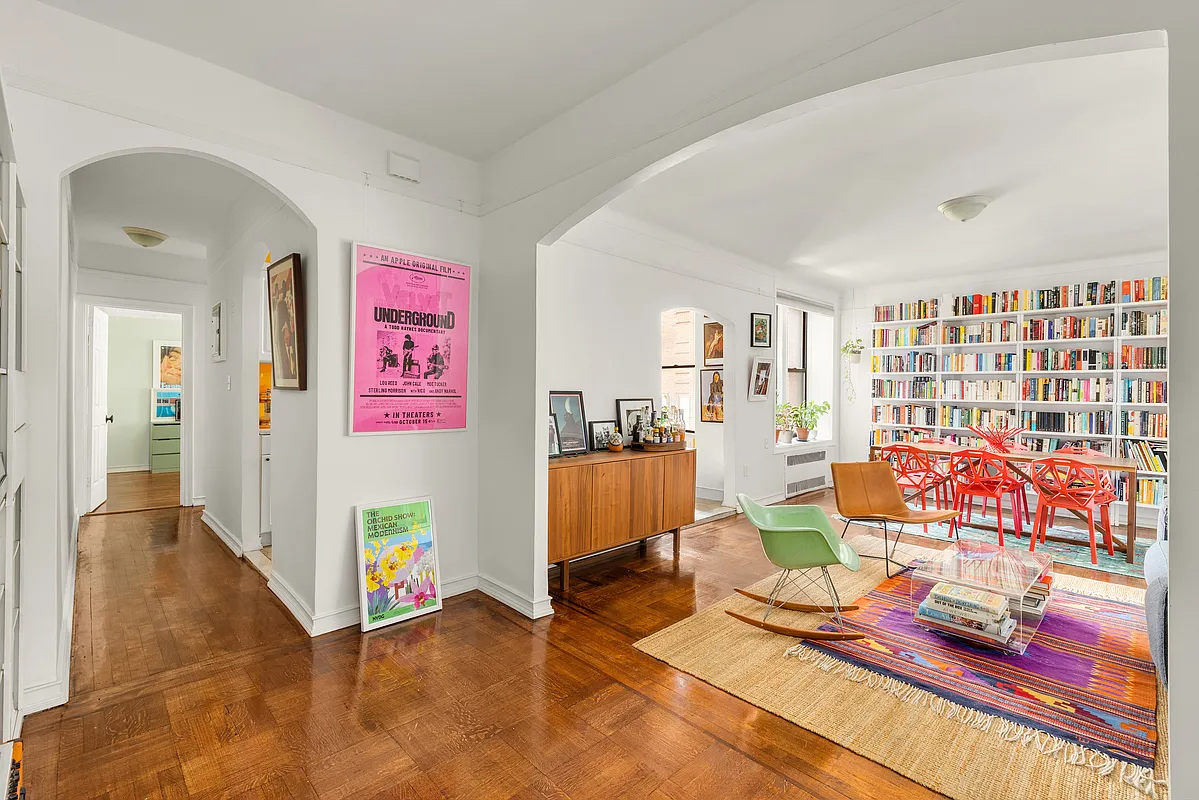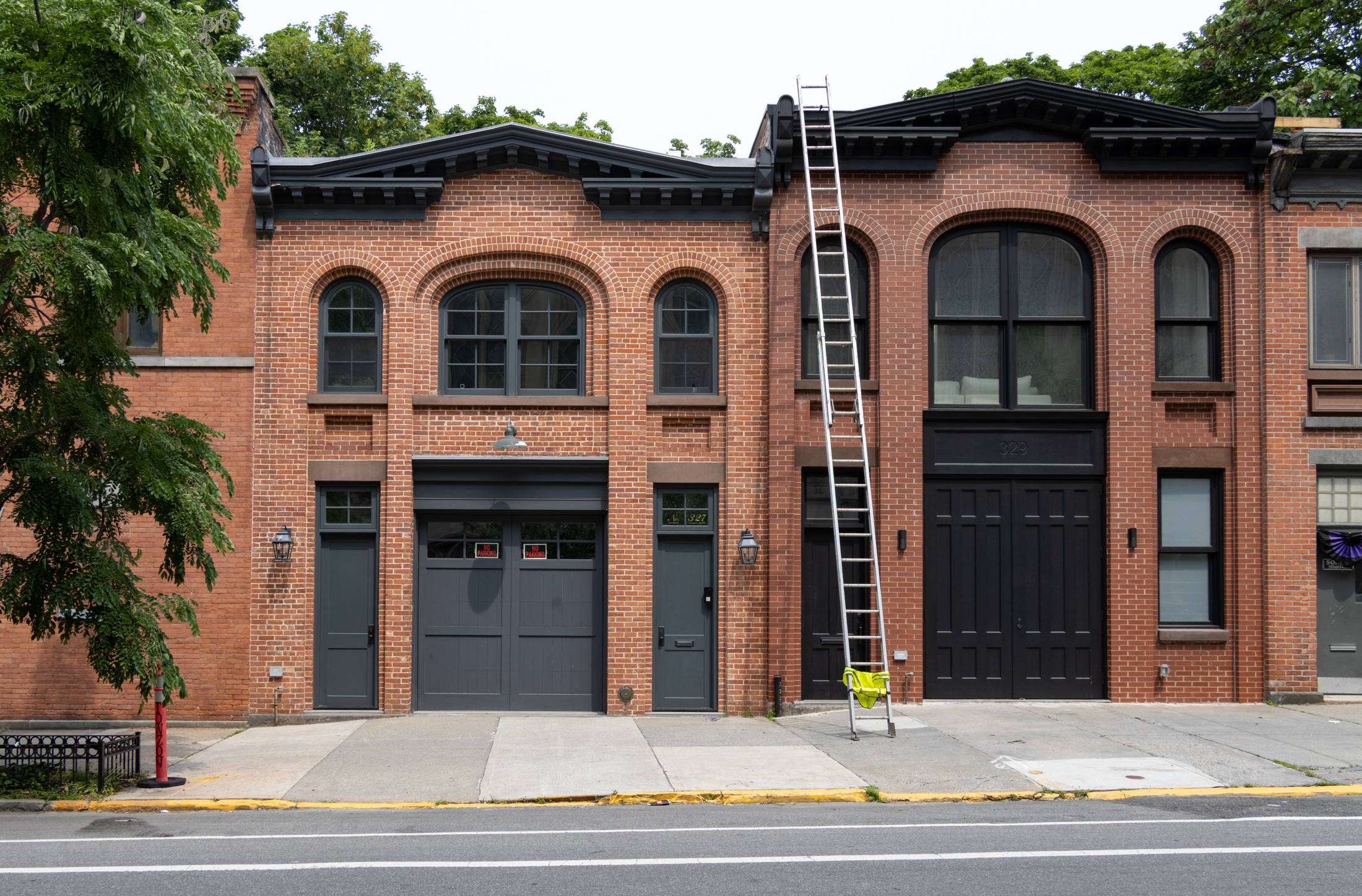Walkabout: Tin Ceilings
Editor’s note: An updated version of this post can be viewed here. As Americans, we can feel patriotic when considering tin ceilings. It’s one of the few decorative elements found in the Victorian Age that didn’t come from directly from England or another part of Europe. They originated in the good old USA, but were…

Photo via DesigningDisney.com
Editor’s note: An updated version of this post can be viewed here.
As Americans, we can feel patriotic when considering tin ceilings. It’s one of the few decorative elements found in the Victorian Age that didn’t come from directly from England or another part of Europe.
They originated in the good old USA, but were inspired by European décor, and from the highest examples of such.
By the mid-1800’s, photography, books and actual travel had made the wonders of the fine tradition of plasterwork, as found in the manor houses, churches and government buildings of England, and other parts of Europe, known to Americans, and they wanted it, especially the growing numbers of the up and coming middle class.

But decorative plaster ceiling elements were heavy, difficult to ship, and hard to install, and therefore exceedingly expensive and impractical. So America turned to technology to solve the problem. Some smart person thought of stamping designs on sheets of thin, rolled out tin, and an important decorative industry was born.
Thin sheets of rolled tin or steel were placed on a raised cast iron mold, called the die, and a heavy cast iron plate, called the tool, was raised by ropes and dropped, causing the design to be permanently imprinted onto the tin.
By the late 1870’s, tin began to appear on the ceilings of homes and businesses.

Between 1890 and 1930, there were at least 45 manufacturers of tin ceilings in the United States, most of them being in New York, Ohio, and Pennsylvania, all near railroad lines that could deliver the tin directly to contractors across the country.
The tin was usually painted white, mimicking hand carved or molded plaster, and tin ceilings could be found in parlors, and dining rooms.
Commercial uses also abounded, with some of the most ornate designs appearing in stores, offices, and restaurants, even garages and service stations, all places where tin panels were often used as wainscoting, as well as ceilings.
By the turn of the century tin ceilings became popular in the service wing of homes, as well, with simple designs gracing ceilings in kitchens, hallways and more informal dining areas.
This coincided with the late Victorian trend towards high standards of cleanliness, thus accelerating the popularity of tin ceilings, as they were seen as more sanitary than simple plaster. Another factor in their favor was their fire resistant properties, which also made their use so prolific in both commercial and residential use.
The late 1800’s saw sale and use of decorative tin spread abroad, to all of North America, Australia, and South Africa.
By the 1930’s, the popularity of tin had run its course. As World War II progressed, metal was needed for the war effort, and most of the manufacturers of pressed tin went out of business, or began manufacturing other products.
It became harder and harder to find replacement pieces for damaged ceilings and panels, and so many tin ceilings were torn out and replaced with sheetrock. Another popular decorating phenomenon of the mid-20th century was the dropped acoustic tile ceiling.
Many old house owners simply installed lower ceilings, covering tin or plaster in the name of modernity and to save energy by making rooms smaller. It was not until the restoration boom beginning in the late 1970’s, that tin began to get attention again.
Some of the oldest companies were found to still be in business, and new companies started up, using the old patterns and dies. Today, tin ceiling panels are quite easy to come by, and a quick search on the internet can find companies all over.
Even Home Depot now sells tin ceiling tiles. Some of the most interesting tin patterns are from Australia, where tin is also enjoying a healthy resurgence of popularity.
The new ceiling panels are no longer tin, however. Most of the modern pressed tin is now aluminum. Copper and steel are also available in much more limited quantities.
Many of the modern companies now offer copper and verdigrised copper finishes, as well as rusted and other aged and distressed faux finished surfaces, as well as classic unfinished silver or pre-painted white.
Some companies also offer tiles with elements of the patterns highlighted in contrasting colors. Hundreds of patterns are once again available, as are backsplash panels, and cornices and corner pieces.
Some of the most ornate patterns have never been replicated for the modern consumer. Many of these are deeply reliefed with scrolls, cartouches, coffered and architectural designs, animals such as lions and eagles, along with cherubs, goddesses, and all kinds of floral designs, and truly resemble the fine plasterwork of Europe.
Many of these ornate patterns and elements were used exclusively in commercial buildings, everywhere from banks to mercantile stores to restaurants to office buildings, anywhere where a customer could be impressed by a wealth of paneled detail, all coinciding with the wealth of decorative detail that was everywhere in the Victorian world.
How many times have we entered an old store and seen the remnants of a very finely patterned ceiling, usually half covered up or peeking out above a dropped ceiling? Many of these more ornate tiled panels are collector’s items, and often appear at very high prices on Ebay, or at salvage yards.
If you have tin ceilings in your house, keep them. They are attractive, hide a multitude of sins, and add value to the home, as they remain a popular feature in detailed period homes. If in bad shape, they can be repaired, painted and offer you many years more beauty.
Most tin ceilings have lead paint on them, so take the appropriate care if removing, or repairing, as one would with any lead paint surface, but it is not a cause for panic, unless you enjoy eating paint chips. Encapsulating old paint under new coats of paint does the job.
Consider putting tin on a ceiling for an authentic period look, or a tin backsplash under cabinets or behind the sink, or in a home bar. It’s possible to DIY this job, panels nail up to plywood or furring strips.
There are also companies that manufacture a drop in installing similar to other drop in ceiling tile methods. You can buy patterns as simple as a hammered field, to a full blown detailed coffered ceiling with elaborate cornice moldings.
You can still get cherubs frolicking, as well as Deco elements. Many companies also can replicate old designs, or create your own designs. The limits of what you can do with tin are only limited by your imagination.
See historic and contemporary examples on Flickr.
Thanks to Bxgrl for suggesting the topic.





Our ceilings that I thought were tin, turned out to be zinc.
The internet has the best tin prices, but at tinsmith you can pick up and avoid shipping costs.
I’ve had tin ceilings installed in different places, but I’m not sure I’d do it again.
The trend for the re-use of old stamped ceiling sheets is also of interest. I ate recently at a restaurant called Stan’s Place, on Atlantic near Bond St that has a well designed new interior (on a budget) and the ceiling is a very handsome ‘crazy quilt’ entirely of re-used pieces of stamped metal ceiling. The positioning of the various patterns and decayed finishes has been handled really nicely.
MM, I love tin ceilings. I spent my childhood staring at the one in my bedroom. I think they’re lovely. Thank you for this great story!
Great post – I love love love tin ceilings.
I am not a big fan of tin ceiling but I agree that when done properly -as in the service station in the photo, they can be attractive. One of the keys things is a border. They need a border or else they look cheap. They also need to be dusted now and then between paint jobs.
I do not like them in formal rooms but tin ceilings are OK in country kitchens and workrooms, general stores, and of course church basements!
I really like tin ceilings. I have no original ones in my house, but we had them installed in our kitchen and dining room when we bought our house in 1974. We also had one installed in our master bedroom a couple of years ago. All of ours are tin coated steel, even the most recent, but those steel sheets were made by Abbington, in Brooklyn, shortly before they went out of business; perhaps aluminum is more common now. It would probably have some advantages–lighter weight, no rust if you have a leak, and somewhat less sharp edges (there’s still a blood stain under the canopy of my dining room light fixture, from where an electrician cut himself while pulling the slack on old BX to expose fresh insulation).
The 1974 tin ceilings were installed by a real old-time company called Eastern Metal Ceilings which seemed to consist of one elderly man–Mr. November. His catalog was a Xerox copy of one printed at the turn of the last century with the patterns no longer available crossed out. Mr November installed the ceilings alone and mitered the moldings on site, with a tin snips. When I had a ceiling installed recently two men took as long for one room as Mr. November took for two and they ordered the mitered molding pieces from the factory. However, they did just as good a job.
One major difference between 1974 and 2008 was the price. Back then tin ceilings were cheaper than anything but plain sheet rock. More recently they cost about as much as having the cracked plaster ceiling stabilized with plaster washers, restored, and lined with fiber glass mesh. I went with tin because, having had numerous walls skim coated, I couldn’t imagine going through the mess of having my badly damaged ceiling repaired. I imagine that was why son many people opted for tin 100 years ago.
In the right space, tin ceilings can look awesome painted a flat black.
BB, I was going to list a bunch of suppliers, but the article was already approaching book proportion, and so many mfgrs are right there, if one Googles “tin ceilings”. But you are correct. They are a valuable Brooklyn resource. I also miss AAAbington, which was in Brooklyn, out by Coney Island, for years, one of the original old companies. Sadly, they closed up shop, only in the last few years.